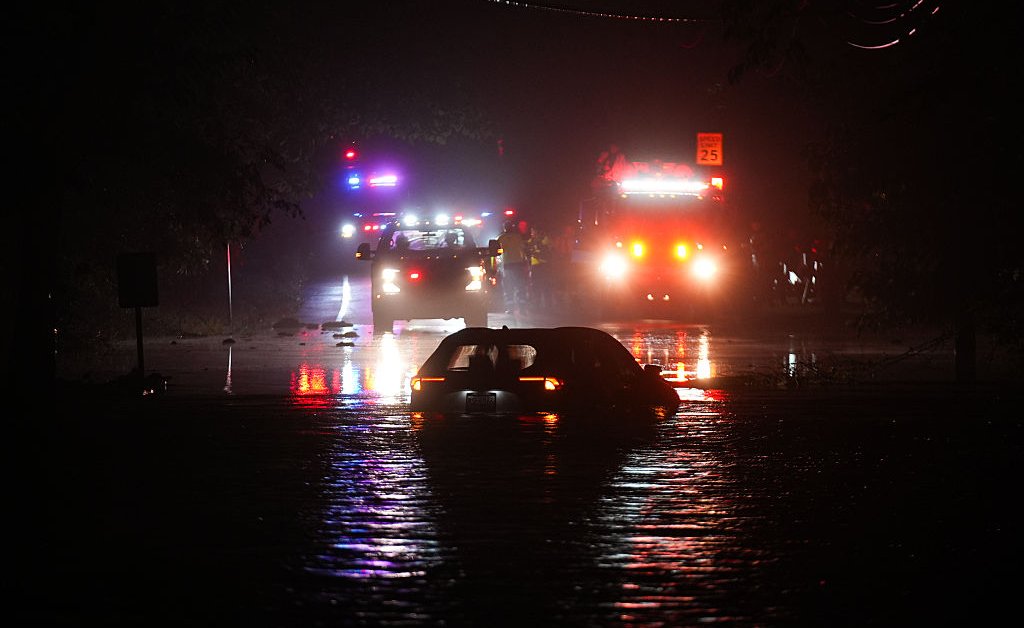The Trump Administration’s cuts to federal weather forecasting could impact the nation’s ability to accurately predict extreme weather events as they happen.
The National Weather Service (NWS) cut nearly 600 positions earlier this year after the Trump Administration ordered many federal agencies to gut their staff. In June, the NWS began the process of hiring more than 100 employees to “stabilize operations” around the country. Meanwhile, the Administration’s current budget proposal would close 10 laboratories run by the National Oceanic and Atmospheric Administration (NOAA), which help accurately predict life-threatening hazards.
Extreme weather events are only becoming more frequent and intense due to climate change. Recent flooding in Texas at the beginning of the month killed at least 130 people, New York and New Jersey has also just been hit by flash flooding, and the fourth tropical storm of the season is expected to hit the coast of Florida this week.
Here’s what to know about how the cuts to government experts might impact weather services—and where to look for reliable information.
How cuts might impact weather services
Significant cuts to the NWS have the remaining workers doing more with less. “The cuts are not sustainable,” says Victor Gensini, meteorology professor at Northern Illinois University. “If you continue to dwindle the workforce, you’re putting more and more responsibility on the men and women who remain in the workforce.”
The forecasts issued in the wake of the Texas floods on July 4 were incredibly accurate, but experts warn that we’re walking on a thin line by expecting forecasters to do the same amount of work to predict natural disasters with less resources. “How many times can you roll the dice?” says Gensini. “I am worried that while there’s no evidence that it’s happening yet, if you continue to put pressure on these local offices with reduction in staff, that the outcome might be different next time.”
Read more: The True Cost of Trump’s Cuts to NOAA and NASA
Many offices around the country are unable to carry out previously routine tasks like releasing weather balloons to get precise atmospheric data—and experts say forecasts have already been less accurate this year. “With less data going in, that also means less reliable, less accurate forecasts coming out of our models, which then impacts the forecast accuracy that we can have over the next day, two days, five days, etc.,” says Jason Furtado, associate professor of meteorology at the University of Oklahoma.
The impact of that remains to be seen. “It’s really impossible at this point to say what the true total impact of not having data set X, Y, or Z is going to have on hurricane season or tornado season,” says Gensini. “And that’s just because we’re living in the experiment.”
Where to find accurate weather information
Your regional NWS is still the best place to get up-to-date news on the weather. “The gold standard is and will be for the foreseeable future, the National Weather Service,” says Gensini.
Services that you might not even realize—like the weather app on your phone or the evening news forecast—rely on federal data from NOAA and the NWS. However, in the wake of cuts, you might need to make some adjustments to where exactly you look for their updates.
Read more: How to Spot Weather Misinformation
“Maybe they don’t have anybody to staff their social media accounts anymore,” says Gensini. “Having multiple avenues to receive those official products from the National Weather Service is really important, whether it’s through your phone or consuming that information through a local, trusted radio or TV station.”
Tune in to your local TV or radio meteorologist, local emergency managers, and government officials, and make sure your cell phone has notifications on for emergency updates.
“We’re breaking the chain at the very beginning, and it’s a domino effect,” says Furtado of the Administration’s cuts. “And unfortunately, by cutting away at these really important, fundamental functions, it’s going to cost a lot in the long run.”
Less accurate data means less accurate forecasts—which could be risky as extreme weather events continue to occur more frequently. “If people want to keep getting that information,” says Furtado, “they should also be contacting their local, state, and Congressional leaders, and really urging them to not take that away from them.”








